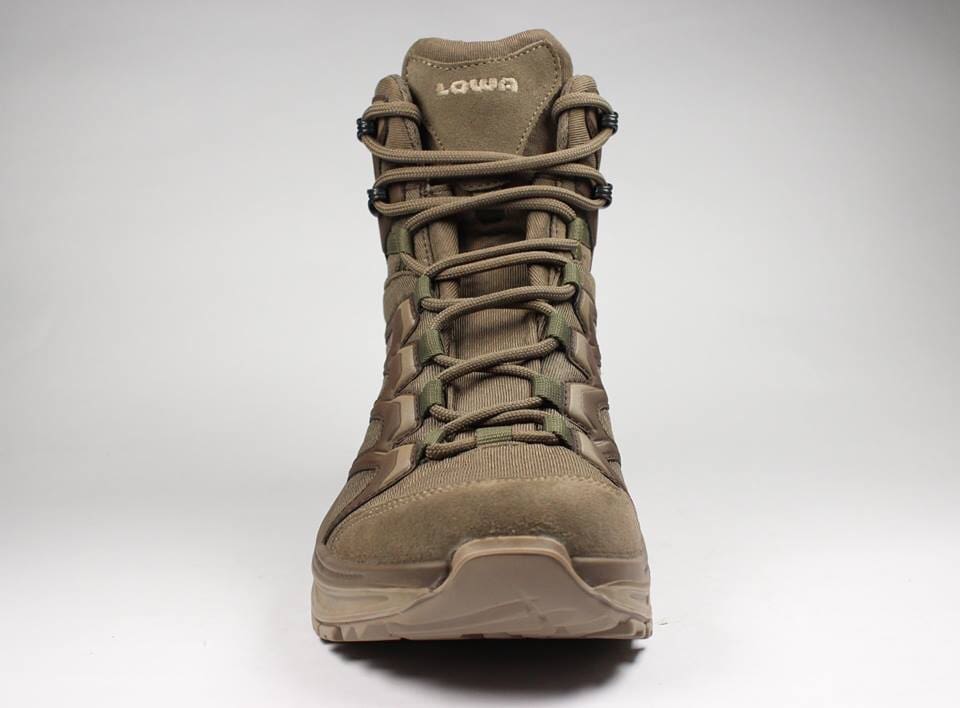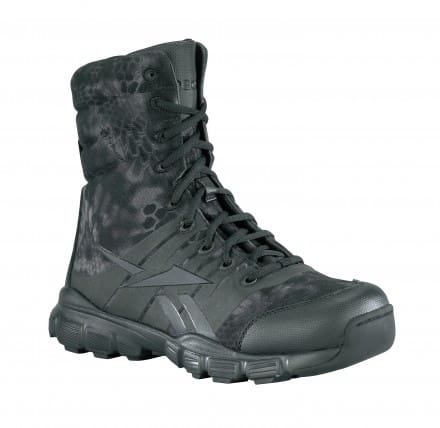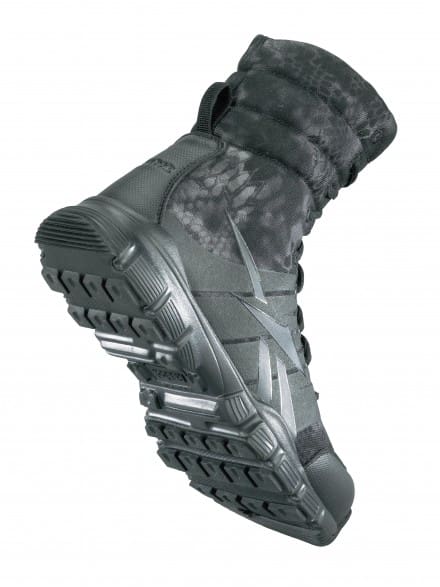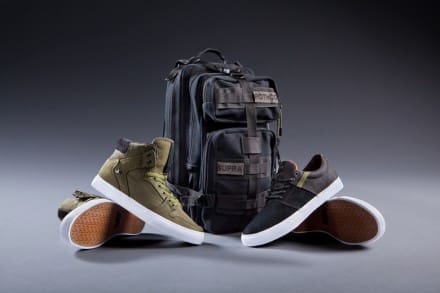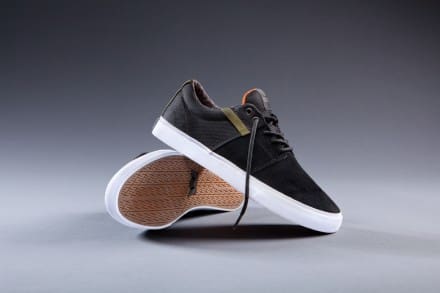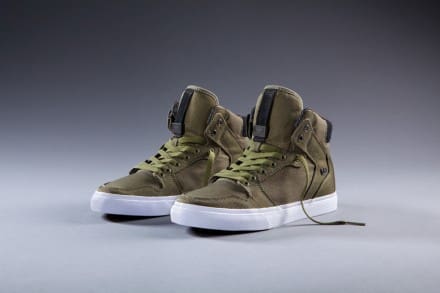Archive for the ‘Boots’ Category
Lowa Innox GTX Mid
Friday, January 16th, 2015Sneak Peek – Lalo Grinder
Thursday, January 15th, 2015Meet a Special Make Up version of the Lalo Grinder in “Lalocam” a proprietary pattern so far restricted to a military customer.
Featuring a Super Fabric toe cap, the 6.2 oz Grinder is a Cross Trainer model with 4mm drop.
Standard colors ship March 1st.
SSD Exclusive – Salomon FORCES Footwear Lineup
Tuesday, January 6th, 2015Here are the first official photos of the inaugural 2015 SALOMON FORCES range, designed specifically for military and law enforcement.
Based on end-user demand in Europe and the USA, the French company Salomon developed a new segment of footwear products for professional customers.
Based on popular, existing models that have already proven their mettle during hard missions over the span of multiple deployments, Salomon has adjusted a few features to make them even more appealing for FORCES customers.
Closed-hooks, gusseted tongues, murdered-out and tan colorways are the primary features they’ve integrated into the new line. But they haven’t stopped there. Salomon is applying over 20 years of footwear expertise into the continued development of FORCES for the foreseeable future.
The very Salomon line was created for extreme winter sports. They have been built to withstand extreme cold weather in mountainous conditions. Turns out, they are also well suited for load-carriage during fast movements during recce and direct action missions. But now, they’ve increased the brand’s versatility across more environments by offering the choice of shoes with or without Gore-Tex membrane.
Thus far, the FORCES line consists of 14 articles that will enhance the performance of tactical law enforcement and military end-users everywhere.

Salomon’s warmest winter boot for extreme environments. Keeps feet warm to -40C/-40F in a lightweight, drive-ready, durable and flexible boot, featuring NASA approved Aspen Aerogel insulation technology, and sole lug pattern designed for snow and ice.
352 959 Asphalt / Black / Black
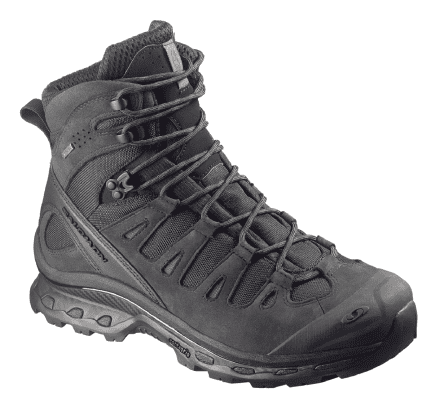
With a Gore-Tex membrane and a stable 4D chassis, the QUEST 4D GTX FORCES gives you the support and grip of a mountain boot, but still has the flexibility to take a knee or sprint to the target in tough conditions.
373 478 Black / Black / Black, also available in Navajo / Navajo / Navajo
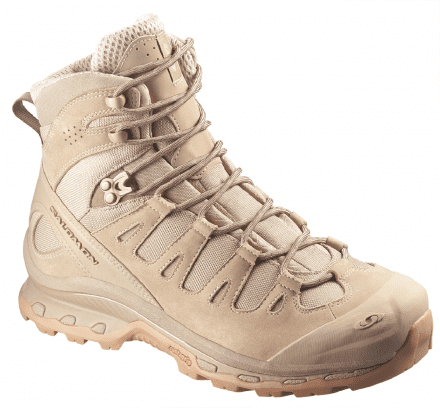
The new QUEST 4D FORCES is the choice for full mission profile with closed lace eyelets for MFF and Fast Rope. 4D Chassis gives you the support of a mountain boot, but still has the flexibility to take a knee or sprint to the target.
373 482 Navajo / Navajo / Navajo, also available in Black / Black / Black
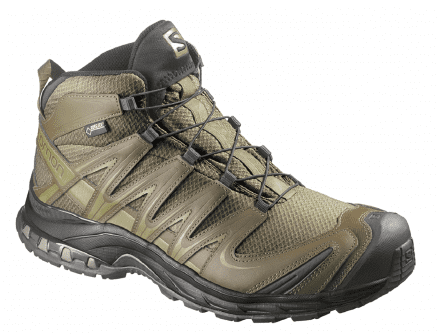
Mid height and, fully waterproof with a GORE-TEX membrane, the XA PRO 3D MID GTX FORCES lets you focus on the mission, not your feet. This bad weather assault boot provides ankle protection, underfoot stiffness, and fast, comfortable lacing system for great fit.
373 485 Iguana Green / Dark Khaki / Iguana Green, also available in Black / Black / Black
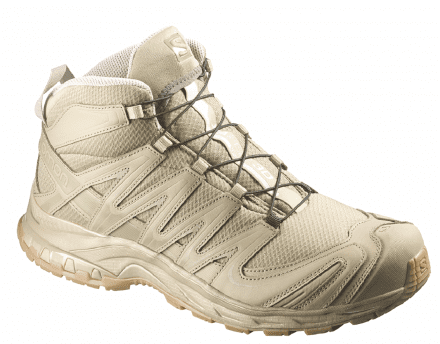
An Ideal hot weather assault boot, XA PRO 3D MID FORCES provides underfoot stability and ankle protection, with a breathable mesh upper and Quicklace system. Comfort and confidence for the entire mission.
373 487 Navajo / Navajo / Navajo, also available in Black / Black / Asphalt
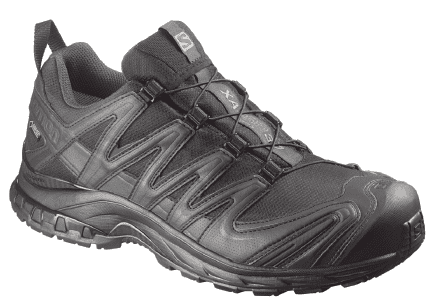
This low cut, weatherproof adventure shoe has a stable, protective 3D Chassis and GORE-TEX upper for all-weather comfort even when you step out of your vehicle. Goes from gym to mission to hot wash.
373 488 Black / Black / Asphalt, also available in Camo / Iguana Green / Black
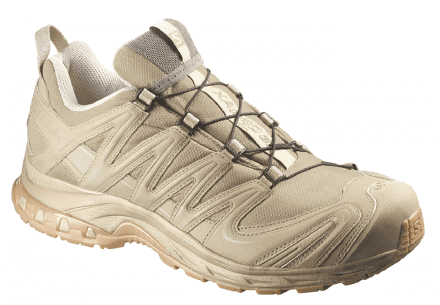
This low cut, weatherproof adventure shoe has a stable, protective 3D Chassis and GORE-TEX upper for all-weather comfort even when you step out of your vehicle. Goes from gym to mission to hot wash.
373 487 Navajo / Navajo / Navajo, also available in Black / Autobahn / Black
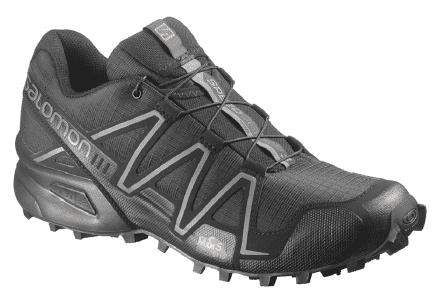
Salomon’s Iconic SpeedCross Trail running shoes feature lightweight and precise fit, with aggressive grip in all conditions. Ideal for training and fast assaults in mud, wet, and snowy conditions.
373 487 Black / Black / Autobahn
Donate Your Used Boots to the ANA Commandos
Monday, December 29th, 2014Although the war is over for the majority of Americans, it wages on for the Afghan National Army and their advisors.
Advisors we know have been telling us about the state of the Commandos’ footwear.
There was this one mission where we were going in at night to clear some checkpoints that the Taliban had raided. We were stacked tightly with our Afghan partners in a helicopter, late at night. It was probably only about 25 degrees or so. You could just barely make out the white capped mountain peaks as we skipped through the valleys. Snow and ice patches littered the LZ. I looked down to make sure that the laces on my cold weather boots were still tight, and that’s when I noticed that the two dudes in front of me had on plastic shoes and the guy next to him had taped the soles of his boots to his uppers. There were several other Afghan Soldiers with similar footwear. It didn’t matter how cold I got on that mission because I knew that those dudes were colder and probably tougher. Period.
The ANA Commandos are generally well equipped but their boots aren’t built to our standards and many of them are wearing footwear that is taped back together as well as running shoes, flip flops and even plastic shoes purchased at the market. This is making it difficult for them to make movements over rough terrain.
It’s tough to kick doors when you’re wearing flip flops. They need gently worn desert and mountain boots in sizes 7-10 to help get these guys back in the fight.
Tactical Tailor has agreed to accept the boots and transship them to their recipients in the ANA.
Tactical Tailor
ANA Boots
2916 107 ST S
Lakewood, WA 98499
Reebok – Limited Edition Dauntless Ultra Light In Kryptek Typhon
Monday, December 22nd, 2014Reebok, in partnership with Warson Brands, has released a Limited Edition Kryptek Typhon variant of their new Dauntless Ultra Light boot, which will be displayed at their SHOT #10179. The boot is being sold at www.reebokwork.com/291/Reebok-Dauntless-Kryptek-RB8722. The full release can be read below:
See the new Reebok Dauntless Ultra-Light Series at booth #10179
St. Louis, MO (November, 2014) – Warson Brands, manufacturers of quality military and tactical footwear and exclusive licensee for Reebok military and tactical boots, recently announced a new line of Reebok branded tactical footwear, the Dauntless Ultra-Light Series.
“These boots are a perfect fusion of Reebok athletic technology and Warson’s tactical/military experience,” says Jimmy Maritz, Warson Product Innovations. “Seamless technology gives you upper support, flexibility, and a glove-like fit. And an injected EVA midsole adds stability and comfort while removing weight. That’s the athletic technology. All this is built on top of our long wearing Dauntless All-Terrain rubber outsole with 360-degree traction on any surface. These are high performance boots designed for the extreme demands of law enforcement and military use.”
The Dauntless Ultra-Light Series is available in an 8-inch tactical boot, 5-inch athletic hiker — both with side zips — and in an athletic oxford. All black. They offer NATO laces, moisture wicking nylon mesh liner, removable injected EVA cushion insert, dual density rubber bottom, and lightweight injected EVA cushion midsole. They are 100% non-metallic. The athletic oxford has a TPU bruise plate which provides additional stability and protection on rocky terrain. Also available in coyote and limited edition Kryptek-Typhon camouflage.
Reebok military and tactical footwear is available now through select duty uniform retailers throughout the United States. For more information, visit ReebokWork.com.
Bill Mills, President, Jim Maritz, CEO, and Warson Brands sales and production teams will be available at their booth to answer any questions.
Supra x Rothco Project
Wednesday, December 17th, 2014Shoe manufacturer Supra has teamed up with Rothco to produce special variants of the Stacks Vulc II and Vaider shoes, as well as a “medium transport bag” backpack.
The Stacks Vulc II features a suede and ballistic fabric upper, both black, with gunmetal hardware and olive accents. The laces consist of black nylon rope with olive speckle. The interior is made of padded mesh with a shemagh tactical scarf pattern. The Stack Vulc II also features white foxing with Rothco heel scabs.
The Vaider features an olive drab ballistic fabric upper, with an embroidered black Velcro heel collar, olive drab hardware, and a traditional Vaider metal tongue slider. The interior is made of padded mesh with a shemagh tactical scarf pattern. The Vaider also features white foxing with Rothco heel scabs.
The Supra x Rothco Medium Transport Backpack is made from black cotton canvas. It features multiple zippered storage compartments with a water repellent lining. The shoulder straps are padded, and the back consists of padded mesh for comfort and breathability. The backpack also comes with custom Supra and Rothco nametapes.
www.rothco.com/market/supra-rothco-limited-edition-collaboration
Sneak Peak – Salomon Forces Speedcross 3 In Black
Friday, December 5th, 2014Here’s a sneak peak of the Speedcross 3 Forces shoe, part of the upcoming Salomon Forces line. The main changes to the Speedcross 3 for the Forces line includes the removal of all the reflective pieces of the shoe and the black/black/autobahn colorway which is more inclined for a tactical environment when compared to the standard variant.
Stay tuned for more info on this and other footwear in the Salomon Forces line.
Announcing the Salomon Forces Range
Monday, November 24th, 2014We’ve been chomping at the bit to tell you about the upcoming Salomon Forces Range. Coming Spring 2015, this new line is focused specifically on the the same folks that read SSD. Military and LE professionals have been wearing Salomons for years thanks in part, to the hard work of the team at Über Group. Now, Salomon is concentrating its efforts to provide the colors and styles you need. We’ve even given you a sneak peek of prototypes of the kinds of footwear you’ll be seeing with this launch.
FOR IMMEDIATE RELEASE
SALOMON FORCES RANGE
ANNECY, FRANCE
Salomon was born in the French Alps in 1947, with a passion for mountain sport progression and product development. And while it has grown into a global leader in mountain and outdoor sports markets, its dedication to quality, innovation and craftsmanship reflect the progressive mountain heritage that remains at its heart. With countless patented innovations and iconic products from skiing to hiking to trail running, the Salomon brand has become synonymous with mountain sports progression.
For 20 years, Salomon innovations have revolutionized the footwear market. Building upon its mountain heritage, Salomon has developed these innovations through experience in hiking, adventure racing, and trail running. As more and more militaries are already wearing the Salomon shoes, the brand decided to bring their iconic fit and performance to products dedicated to the specific needs of military, safety, and law enforcement professionals.
Soldiers and professionals need dedicated equipment to operate in hostile environments, beginning with footwear. In addition to year-round comfort, outstanding traction in changing terrain, footwear for military and law enforcement must be stable, durable enough for intense conditions, and provide complete weather protection. Salomon’s line of Forces Footwear for 2015 includes specific versions of some of our highest performance models, dedicated to the needs of professionals in the field.


